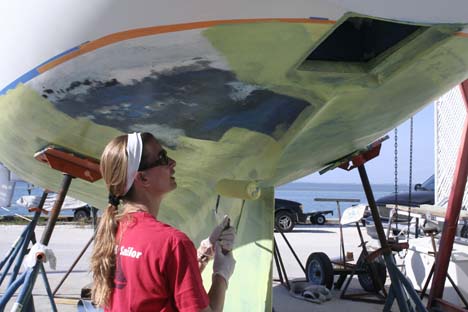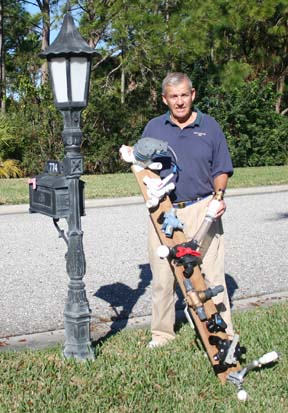
I wonder whether sailors are the only ones that notice that life comes at you in waves. Some moments slip quietly beneath the hull, hissing as they pass, lulling you to sleep. Others crash over the pushpit and plunge down into the cabin, spoiling your last best chance for a good nights rest. Those are the moments that remind me why we shoved off in the first place.
Practical Sailor is riding one of those wilder waves right now. Weve got so many tests in the air, Im afraid to open my inbox these days, for fear that one of our testers has again spiraled off into the deep end of data collection. This, you see, is the greatest challenge we face. Our testers are not de-railed by complacency or indifference. Quite the opposite, in fact. So consumed by their mission, they like to pick up every detour and follow it wherever it may lead. Three-week tests drag on for years, with the final results forever lying tantalizingly out of reach. So where are the detours leading these days? Heres a sampling of whats ahead.
Our mountain-climbing, Chesapeake-cruising, iguana-raising chemist Drew Frye, fresh off his-not-so-fresh encounters with holding tank odors has set his sights on gasoline additives. If youve got a miracle potion that promises outboard propulsion Nirvana, let me know, and well test it. If theres one thing I do know, its a test that wont come off without a scuffle. The only other can of worms more contentious than fuel stabilizing concoctions-that I know of-is anchors.
Meanwhile, not far down the road in Virginia, tester Frank Lanier, who famously watched wind-turbines whirring all through the winter of 2007, is ramping up a new round of VHF radio tests, with a special emphasis on automatic identification systems (AIS). Lanier recently retired from the Coast Guard and is perpetually planning a prolonged retirement cruise with his family. But every time he has his dream cruise mapped out for the summer, he finds himself ensnared in another Practical Sailor test. Such is the noose of consequence.
A third member of our Chesapeake Bay team, Technical Editor Ralph Naranjo, dropped in on our offices in Sarasota, Fla. last week and convinced me to help evaluate the effect of a fully inflated PFD/harness on a person who is trapped under a boat thats turned turtle. Would someone be able to swim out from under the boat? If not, how quickly can a person deflate or get free of the PFD? Conditions in the swimming pool were tame, but our struggles, even in those easy circumstances, reinforced our concerns that an auto-inflating life vest can become a death vest when the boat goes upside-down. Naranjo, who served on the U.S. Sailing panel that investigated the fatal capsize of WingNuts in last years Chicago-Mackinac race, will be helping lead our search for an improved PFD/harness design. If youve got an idea to improve harnesses, inflatable PFDs, or tethers, please send it our way.

And then there is Florida-based Dave Gill, who tested more than a dozen different marine heads for us last year. After a brief hiatus during the holiday season, he apparently missed marine plumbing so much that he enthusiastically signed up to compare Y-valves. Ill admit, a report on waste system valves seemed to me like an ideal cure for insomnia, but once Gill went to work dissecting the valves and putting them under pressure I was-pun intended-sucked into the project.
There is more of course. Bill Bishop, the self-described ranting marine installer is itching to test-drive the Raymarine e7, which recently arrived at our office. And new contributor Scott Rimmer takes a look at the impact that the financial crisis has had on the market for boat loans. (Try to guess how that one turns out.) Yours truly is still cleaning bottom paint samples out from under my nails as I assemble data for our March bottom paint report. Meanwhile, our tireless Managing Editor Ann Key is overseeing the testing of the new ultrasonic antifouling device supplied by smartantifouling.com that readers have been so eager to see evaluated.
Now, if I could only get some sleep.


































